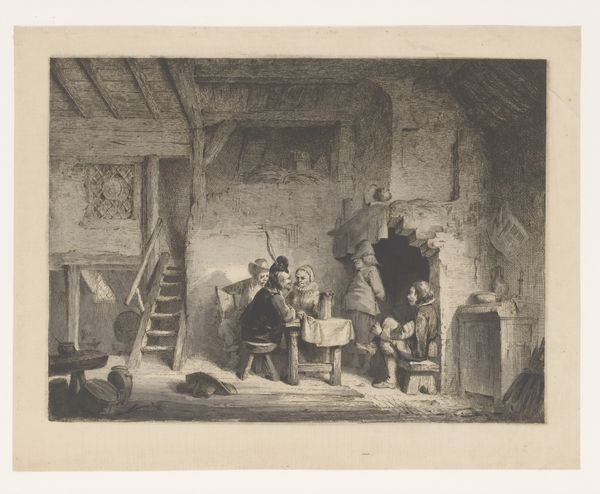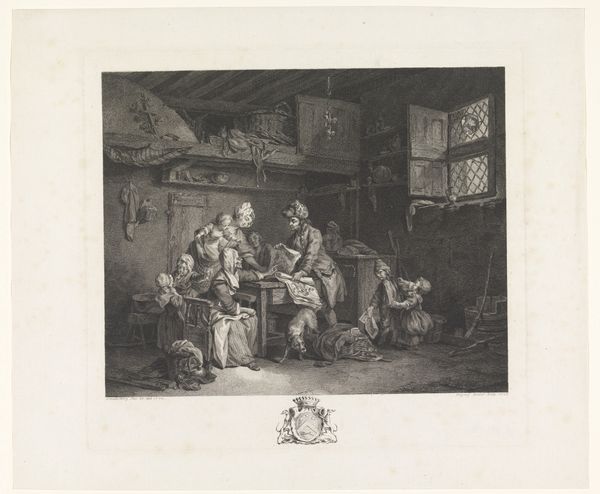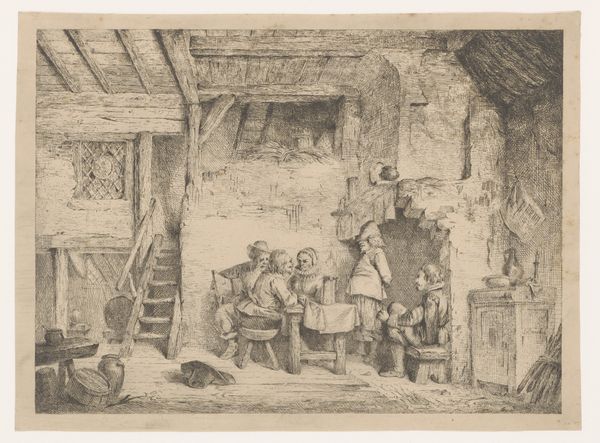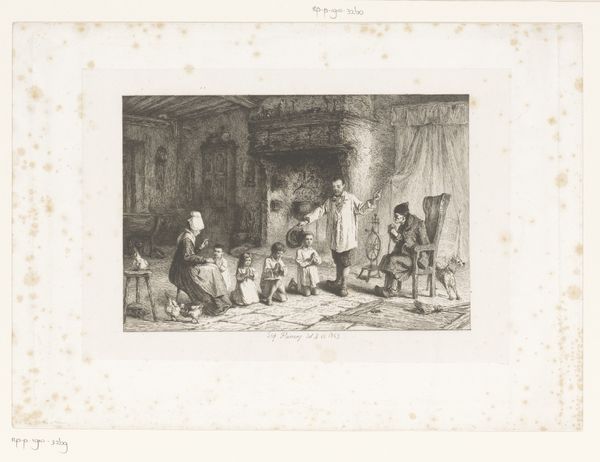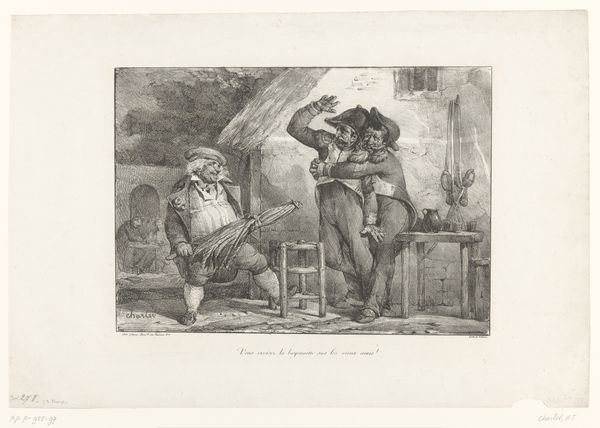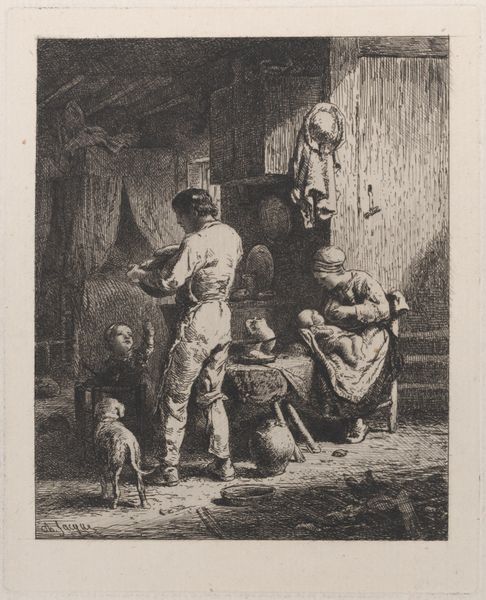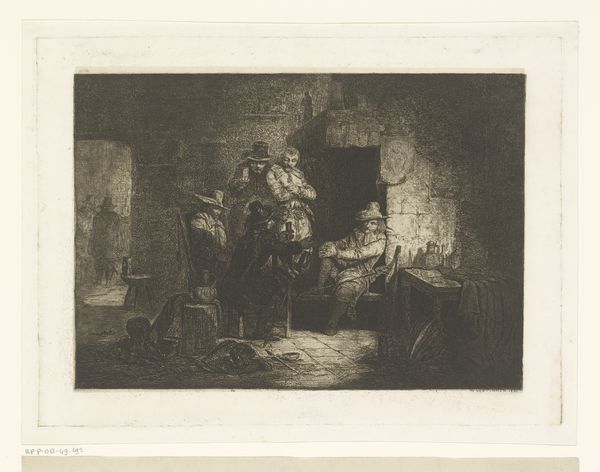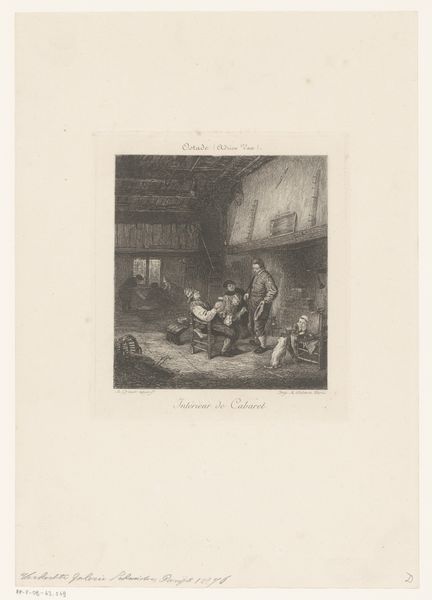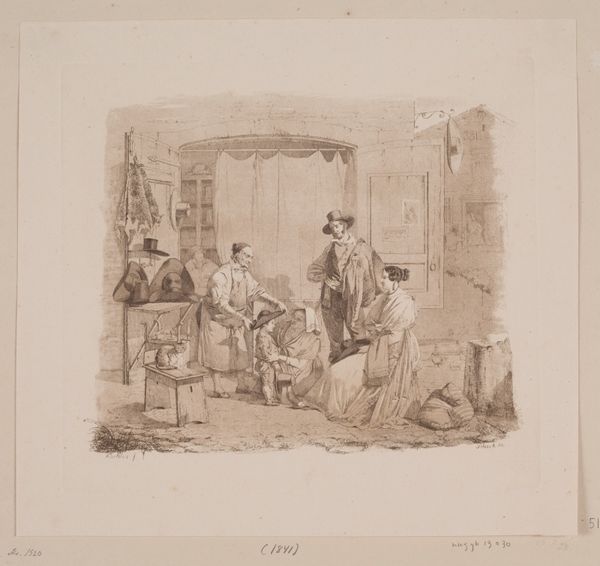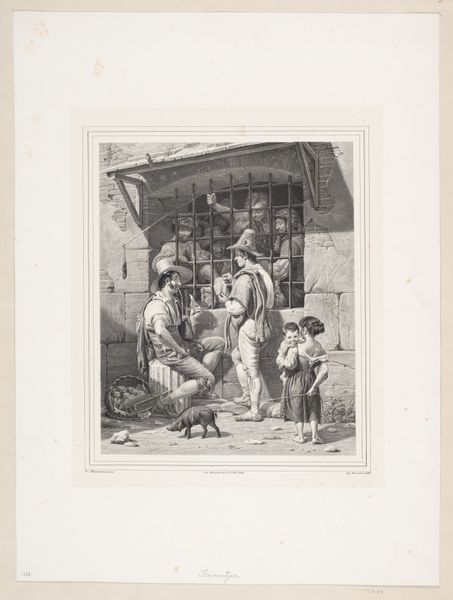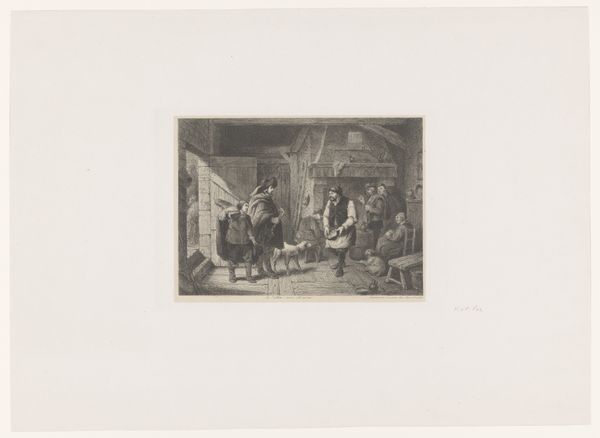
drawing, print, etching, paper, ink, engraving
#
pencil drawn
#
drawing
#
light pencil work
#
narrative-art
# print
#
etching
#
pencil sketch
#
old engraving style
#
paper
#
ink
#
pencil drawing
#
romanticism
#
genre-painting
#
engraving
Dimensions: height 284 mm, width 417 mm
Copyright: Rijks Museum: Open Domain
Editor: This is *Gezelschap in zestiende-eeuwse kleding in een kroeg*—or, *Company in Sixteenth-Century Clothing in a Tavern*—created in 1849 by Louis Antoine Carolus. It’s an engraving in ink on paper. I find the depiction of social gathering in the tavern so appealing. How do you interpret this work, especially regarding its portrayal of community? Curator: Well, this print invites us to think about how historical narratives are constructed and consumed, especially considering Carolus was a 19th-century artist looking back at the 16th century. Notice the attire, the setting, the activities, they aren't merely aesthetic choices. Consider: Who is represented in these depictions of leisure, and who is left out? Are these romanticized visions or reflections of the lived realities of the past? What might Carolus be saying about his own time by looking back? Editor: That’s fascinating. So you’re saying it's not just about historical accuracy, but also about the artist’s perspective and agenda? Curator: Precisely. The act of representing the past is always a political act. What did “the 16th century” mean to a 19th-century audience? What kind of values or social structures were being promoted or challenged through this type of imagery? Look closer at the faces. Do you find certain expressions or characteristics dominant? What might that suggest about societal roles at the time, and also potentially in Carolus’ time? Editor: Now that you mention it, everyone does seem very… similar. Curator: Exactly! Perhaps this idealized homogeneity tells us more about the artist’s own social and political context than about the actual diversity that certainly existed in 16th-century taverns. By questioning whose stories get told and how, we start to unravel the power dynamics embedded within historical art. Editor: This really changes how I see the piece. Thank you for broadening my understanding! Curator: Absolutely, this kind of art becomes relevant when we examine historical representations critically and consider them within modern, intersectional narratives.
Comments
No comments
Be the first to comment and join the conversation on the ultimate creative platform.
